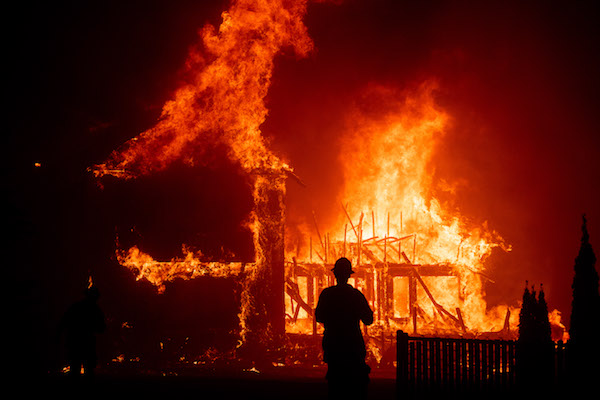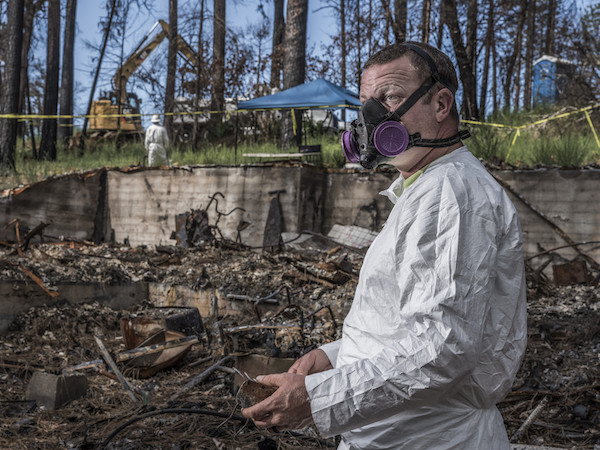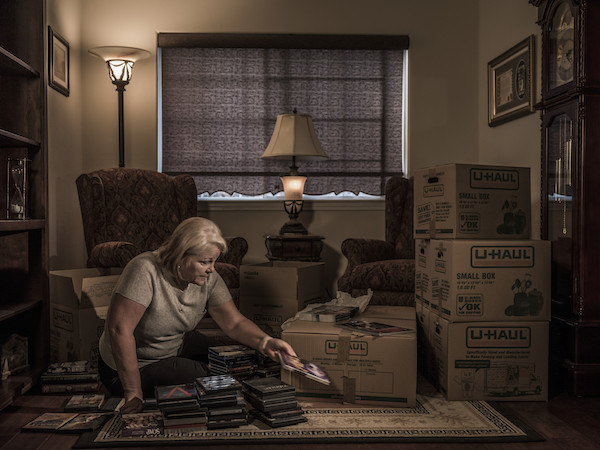The Camp Fire on November 8, 2018, claimed 85 victims and destroyed nearly all of Paradise, California. Rebuilding Paradise, a new documentary from director Ron Howard, follows the community through a year-long recovery period.

Best known for commercial blockbusters like A Beautiful Mind and The Da Vinci Code, Howard has recently devoted himself to documentaries on musical celebrities like Jay Z, Luciano Pavarotti and The Beatles. With no narration or traditional interviews, Rebuilding Paradise is his first effort in the cinema verité genre.
Howard follows the story chronologically, pausing at times to show drone footage of Paradise and its surroundings. TV news footage and police radio fill in details about the size and ferocity of the fire.
Using smartphone videos, dashcams, camcorders, and other sources, Howard and his editor M. Watanabe Milmore assemble a terrifying account of the fire, from its first stirrings in the Feather River Canyon to scenes of unimaginable fury in Paradise itself. Flames consume everything: trees, brush, buildings, cars—even the roads catch fire. Winds howl, skies blackens, fuel tanks explode. In one shot a homeowner aims a garden hose at an entire forest on fire.
The sound clips, a montage of news reports, phone calls, and eyewitness observations, are equally effective. Hospitals are evacuated while the doctors are still doing surgery, firefighters request additional engines, police order “mandatory evacuations.” “We are 100% surrounded by fire,” says one report. “Structure defense is not a priority right now” goes another.

Howard and his crew return to Paradise a month after the fire, then again in three-month intervals. The filmmakers catch the flurry of national attention as politicians appear and depart. They document onerous regulations and restrictions imposed by government agencies.
In the aftermath of the disaster, Howard and his crew single out individuals. Woody Culleton, the former mayor and a self-professed town drunk, remarks, “Within a day it was gone.” Officer Matt Gates drives through ravaged neighborhoods, school superintendent Michelle John tries to plan for students, Krystle Young confronts life in emergency housing.
Rebuilding Paradise lets the people who experienced the fire come to grips with it on their own terms, at their own pace. It’s an interesting narrative strategy that doesn’t always pay off. Some “characters,” notably Carly Ingersoll, an articulate, self-aware school psychologist, offer useful insights. Others seem lost, adrift, or trapped.

It’s hard not to feel for the survivors of the fire, but it’s also hard to stay engaged in the minutiae of their struggles against bureaucracies, their grudges and slights against family members. What FEMA will and will not pay for is incredibly frustrating, but Howard did not find a way here to channel that frustration into a narrative the way a filmmaker like Frederick Wiseman can.
Rebuilding Paradise is in some ways a documentary of privilege. With a career that stretches over decades, Howard has earned the right to make a movie about whatever he wants. He has the resources to marshal footage, revisit survivors, develop narrative ideas. But Rebuilding Paradise is reporting, an accumulation of facts and details. It’s missing the vision and point-of-view that marks great documentaries.
Available as a virtual release from National Geographic Documentary Films through Laemmle and ShowcaseNOW (National Amusements), in select drive-ins and through individual cinemas including Jacob Burns Center in New York, Coolidge Corner in Brookline, Gene Siskel Film Center and Music Box Theatre in Chicago as well as Balboa and Vogue Theaters in San Francisco. Click here for a full list of markets.


